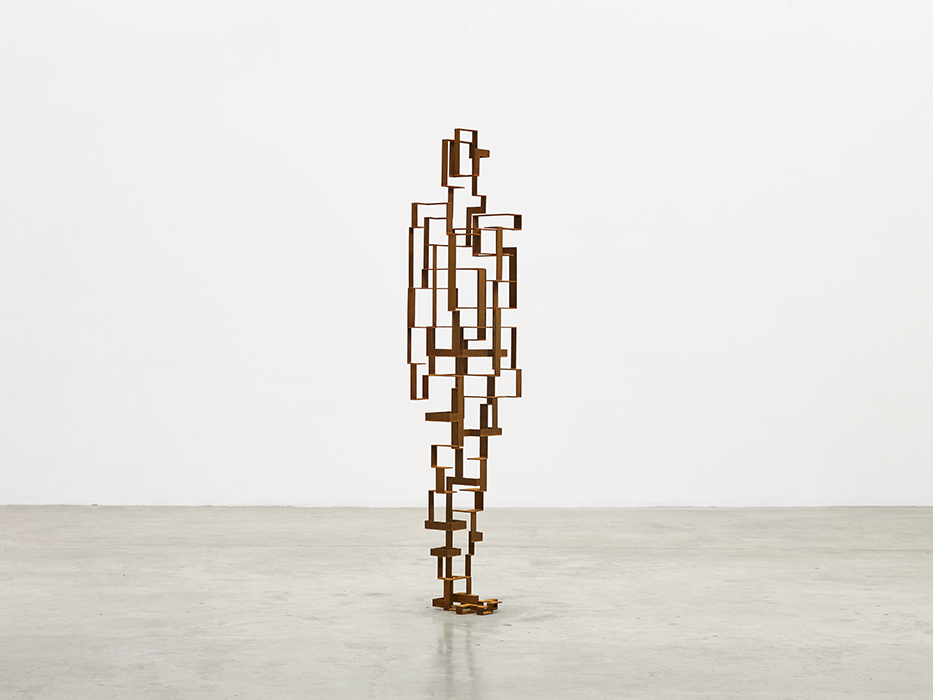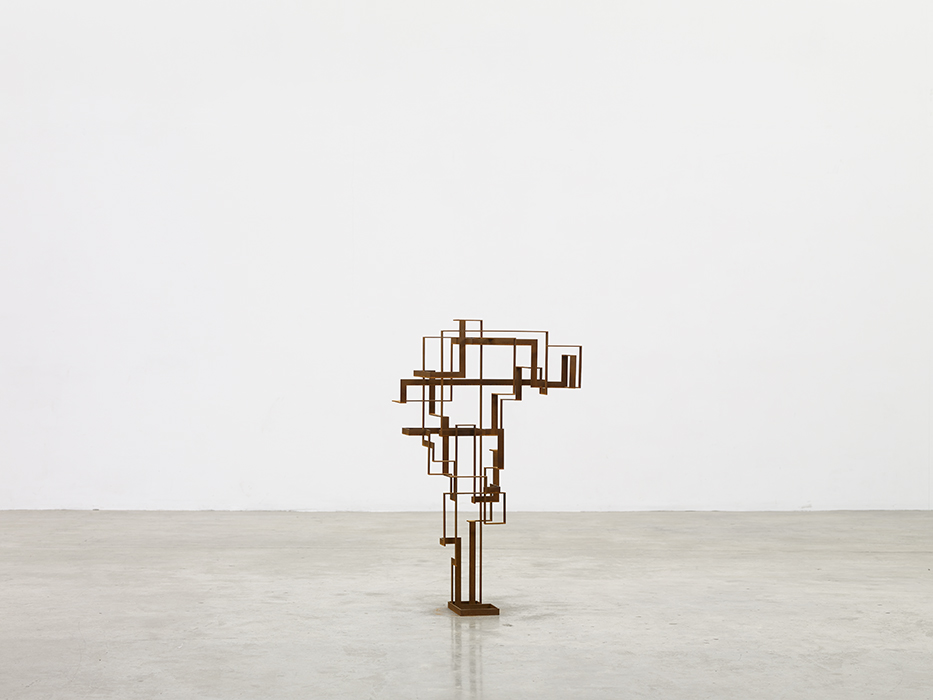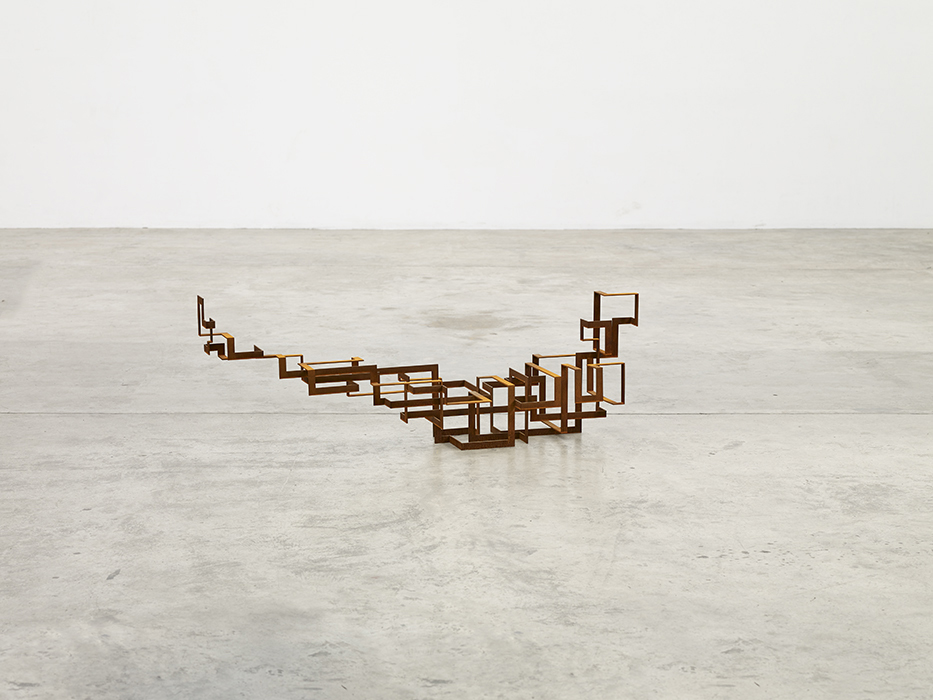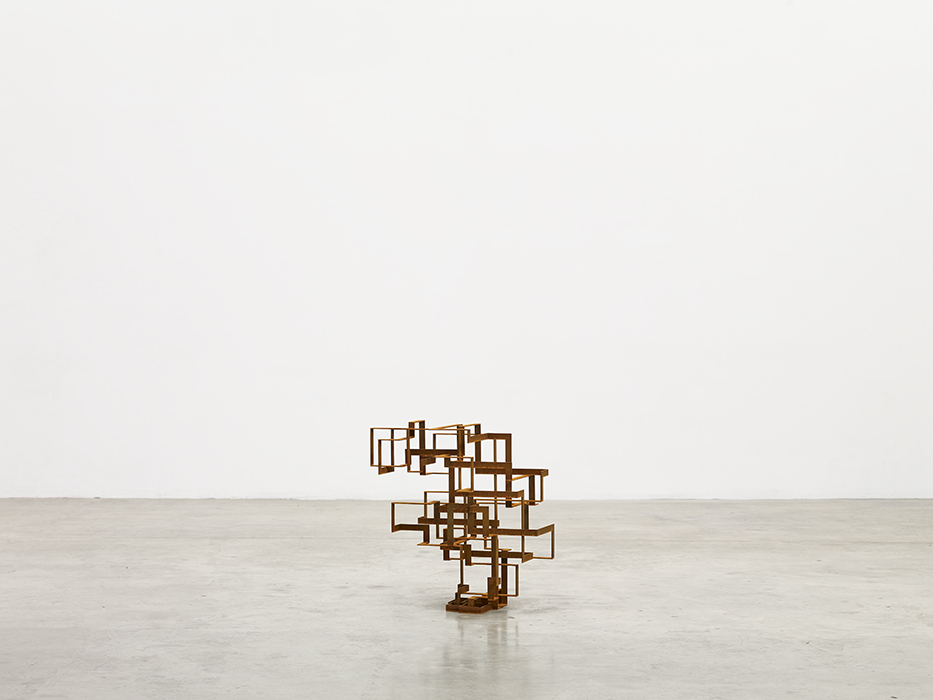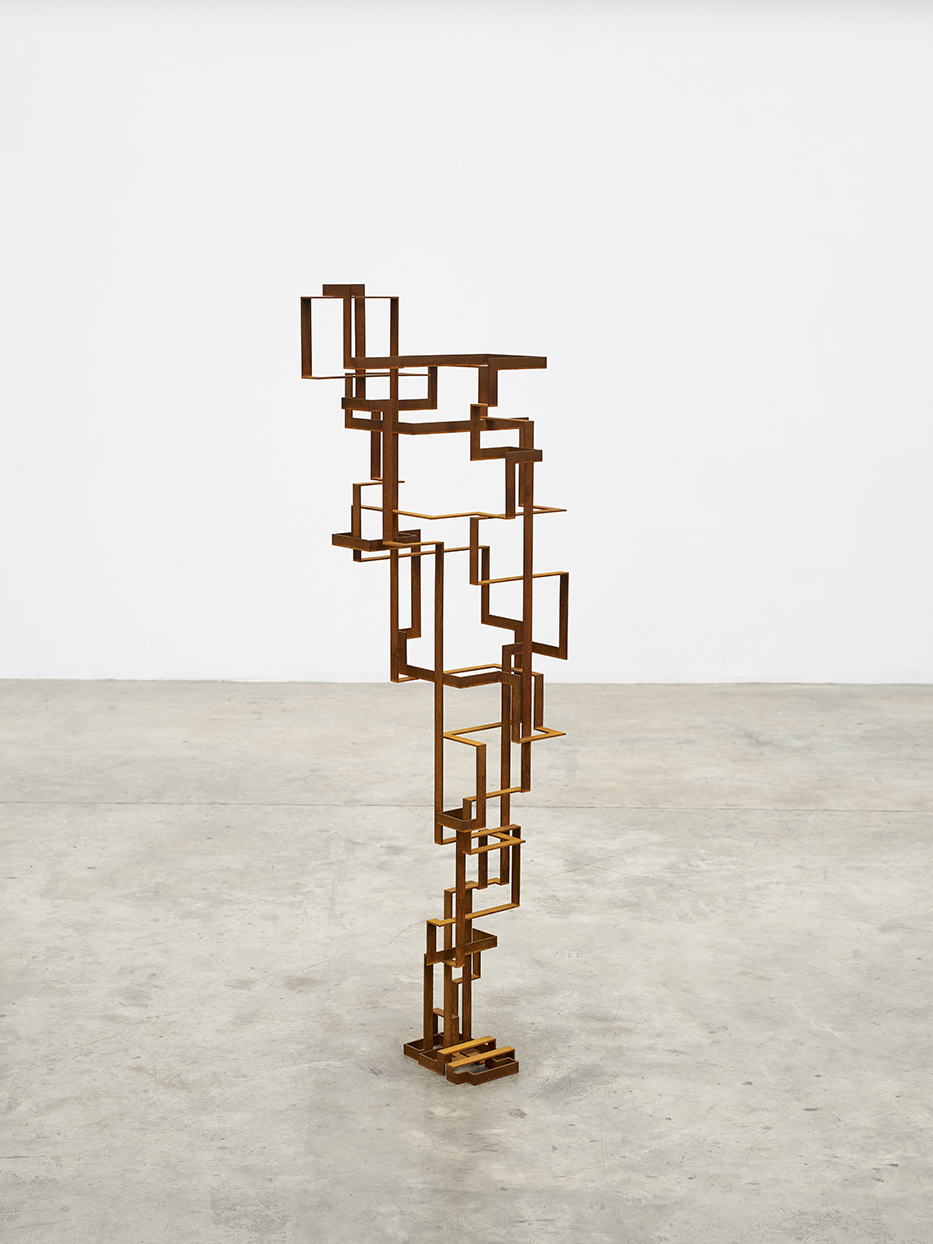These works activate the dynamic between still object and moving viewer with a line that appears to continually change as one's perspective changes. The body is opened up as a space of transformation, and invites visual and empathic projection.
The Strapworks have evolved out of the Open Blockworks series at the point where some of the planes could be shared between adjacent cells. A structural and conceptual journey has begun in which inner and outer surfaces switch function, as is found in the Mobius strip or the Kleinian bottle.
You may be able to see the evolution from the earliest works that still articulate body space relating to the original rectangular cells. As the Strapworks series develops, the line changes, becoming more fluid and open, mapping the entire bodyspace with a strap that continuously flips.
These works can be seen as a series of proposed bodyspace anatomies offered as evidence of an evolving language; as isolated but progressive examples of this way of articulating both body and space and body as space.
I have always been moved and impressed by the way that the variegated plumage of flocks of Sanderlings, Starlings and Knots shockingly displays extraordinary transformation at any alteration of flight line in a flash not dissimilar to that of a shoal of fish all turning at the same time. Something of this is carried in the oxidised surfaces of the Strapworks.
At school, our monastic masters encouraged us to do writing exercises. I enjoyed using an Osmiroid medium-width italic fountain pen, where the diagonal strokes become thin lines and the downstrokes are wide, giving the writing a dynamic between the cursive and the geometric. I don't want to overegg this reference, but these works - as lines in three dimensions written on the body, or more accurately within the body - is pertinent to my conceiving of the work.
Calligraphic notation and the printed circuit have in common an attempt to provide a heuristic structure. This is pertinent to my larger project: these sculptures are three-dimensional mappings of the embodied space of mind.
Another reference is Celtic, Viking and Anglo-Saxon work from what used to be known as the dark ages that remain, to this day, a gothic challenge to classical order. I am thinking of the weaving line that we find in the buckles of Sutton Hoo, Celtic shields and the Book of Kells - all precursors of the printed circuit that animate a serpentine line. These historical examples were mostly in low relief, but here in the Strapworks the line has really been fully liberated into three dimensions.
You may be able to determine in the evolution of the pieces an attempt to allow the line the greatest possible liberty, while having to conform to structural dictates. In the most successful of the standing works there is a compression through the foot and ankle that rises into a liberated upper body space. This shift from constriction to openness is perceptual and emotional.

